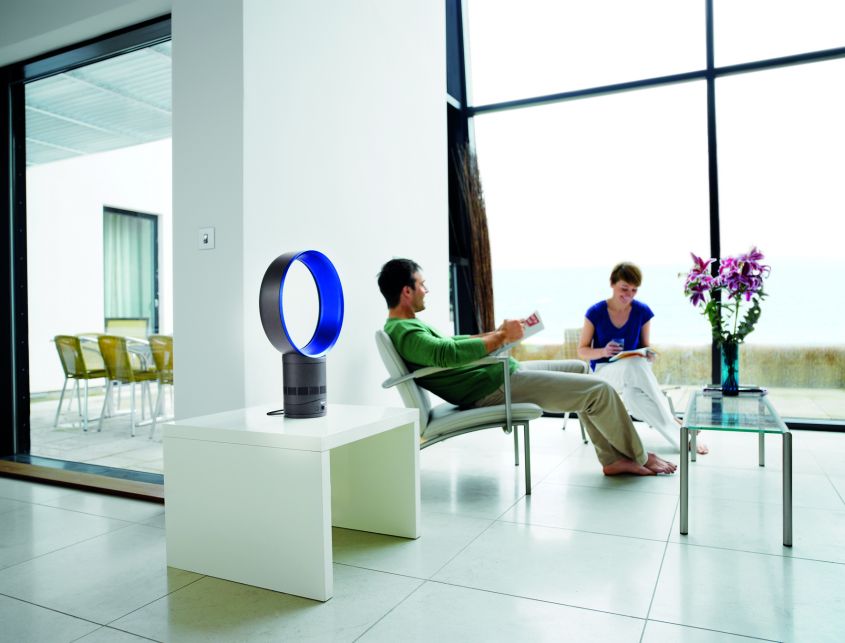THE design fans they contribute to well-being during the summer months, thanks to the movement of air within the environment, but at the same time they can be aesthetically pleasing complements. The market offers original and intriguing table, floor and ceiling models, all of which can be used for refresh the hot summer, and easy to adapt to your own style of furniture.
Design ceiling fans
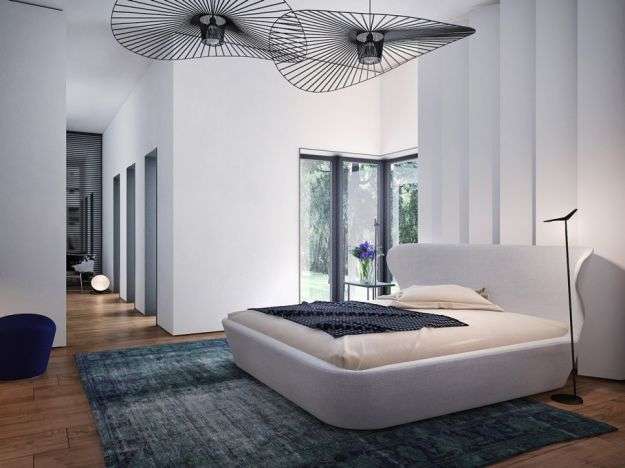
THE ceiling design fans they are suitable for all environments as long as they are of adequate size, especially in terms of height, and with heights of less than 240-230 cm it would be better not to install them. A good ceiling fan provides a pleasant, uniform and non-direct air flow. Their yield depends on the shape and length of the blades: the petal and slightly concave ones collect the air better, while the flat and elongated ones spread it more evenly in the room. Interesting is the Mistral model, the chandelier with fan conceived and designed by Moooi.
Design table fans
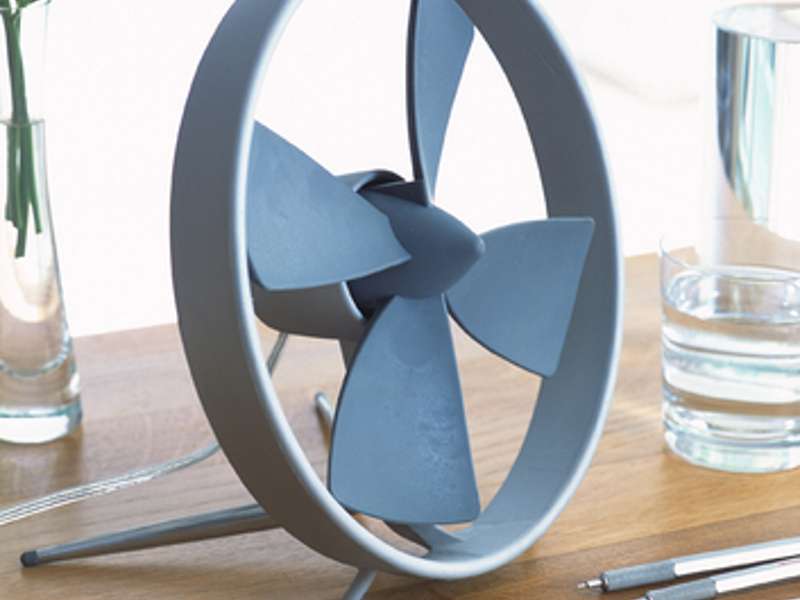
THE table design fans today they are rather light, not bulky, usually small with diameters of about 30 cm. Thanks to the fact that they are easily movable and can be positioned anywhere, they become a very functional accessory. They are ideal especially for the study area, in the children’s rooms, but it must be ensured that they are equipped with a fixed grate that protects from the blades.
Design floor fans

THE floor-standing design fans they are designed to ventilate even large rooms without having to resort to any type of installation work. With an average diameter of about 40 cm, they are often orientable, and those of the rotating type have blades that rotate without oscillating and a grill that rotates to distribute the air in every direction.
Mini design fans
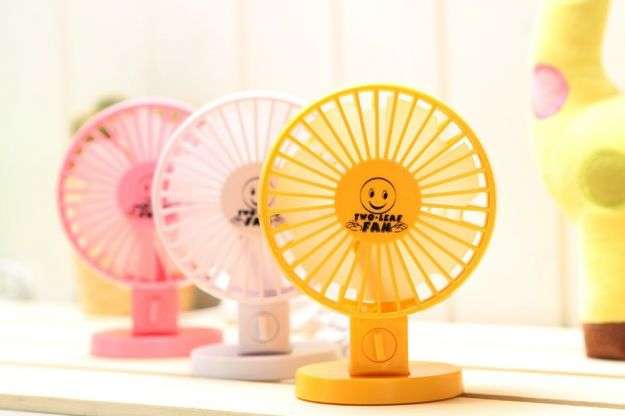
THE mini design fans they are transportable, they have blades of about 10 cm in plastic material because they are often not protected by grates, and they exist in the version with battery recharge, with USB connection or suitable to be powered by the car’s cigarette lighter.
Bladeless design fans
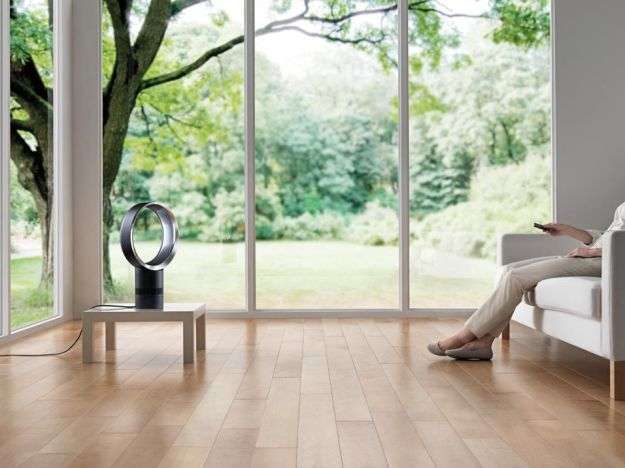
In the bladeless design fans the air stream is sucked in and then put back into circulation by means of a powerful jet that comes out of a slot arranged in a ring. The positive aspects of this type of latest generation fan there are many: the particular shape of the outlet channel ensures that the air flow is uniform and not swirling, the absence of blades makes them safer, the lack of grids facilitates cleaning, and the operation is silent and stable. A much loved model is Dyson’s Dyson Air Multiplier fan, invented by James Dyson and built after four years of study and design.
THE design fans they contribute to well-being during the summer months, thanks to the movement of air within the environment, but at the same time they can be aesthetically pleasing complements. The market offers original and intriguing table, floor and ceiling models, all of which can be used for refresh the hot summer, and easy to adapt to your own style of furniture.
Design ceiling fans

THE ceiling design fans they are suitable for all environments as long as they are of adequate size, especially in terms of height, and with heights of less than 240-230 cm it would be better not to install them. A good ceiling fan provides a pleasant, uniform and non-direct air flow. Their yield depends on the shape and length of the blades: the petal and slightly concave ones collect the air better, while the flat and elongated ones spread it more evenly in the room. Interesting is the Mistral model, the chandelier with fan conceived and designed by Moooi.
Design table fans

THE table design fans today they are rather light, not bulky, usually small with diameters of about 30 cm. Thanks to the fact that they are easily movable and can be positioned anywhere, they become a very functional accessory. They are ideal especially for the study area, in the children’s rooms, but it must be ensured that they are equipped with a fixed grate that protects from the blades.
Design floor fans

THE floor-standing design fans they are designed to ventilate even large rooms without having to resort to any type of installation work. With an average diameter of about 40 cm, they are often orientable, and those of the rotating type have blades that rotate without oscillating and a grill that rotates to distribute the air in every direction.
Mini design fans

THE mini design fans they are transportable, they have blades of about 10 cm in plastic material because they are often not protected by grates, and they exist in the version with battery recharge, with USB connection or suitable to be powered by the car’s cigarette lighter.
Bladeless design fans

In the bladeless design fans the air stream is sucked in and then put back into circulation by means of a powerful jet that comes out of a slot arranged in a ring. The positive aspects of this type of latest generation fan there are many: the particular shape of the outlet channel ensures that the air flow is uniform and not swirling, the absence of blades makes them safer, the lack of grids facilitates cleaning, and the operation is silent and stable. A much loved model is Dyson’s Dyson Air Multiplier fan, invented by James Dyson and built after four years of study and design.

